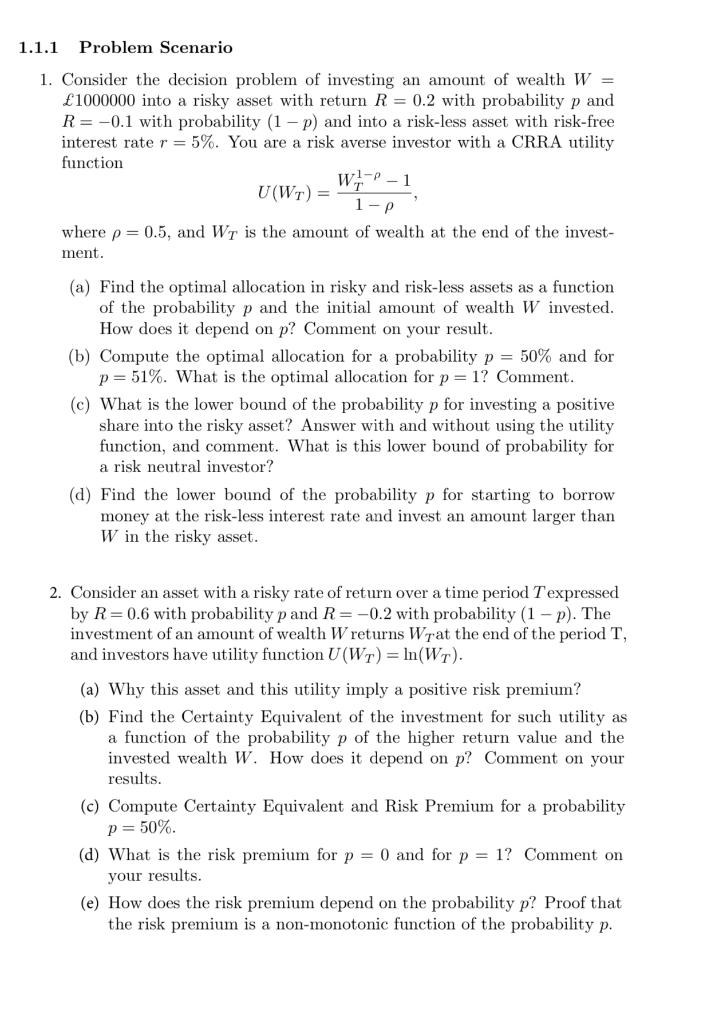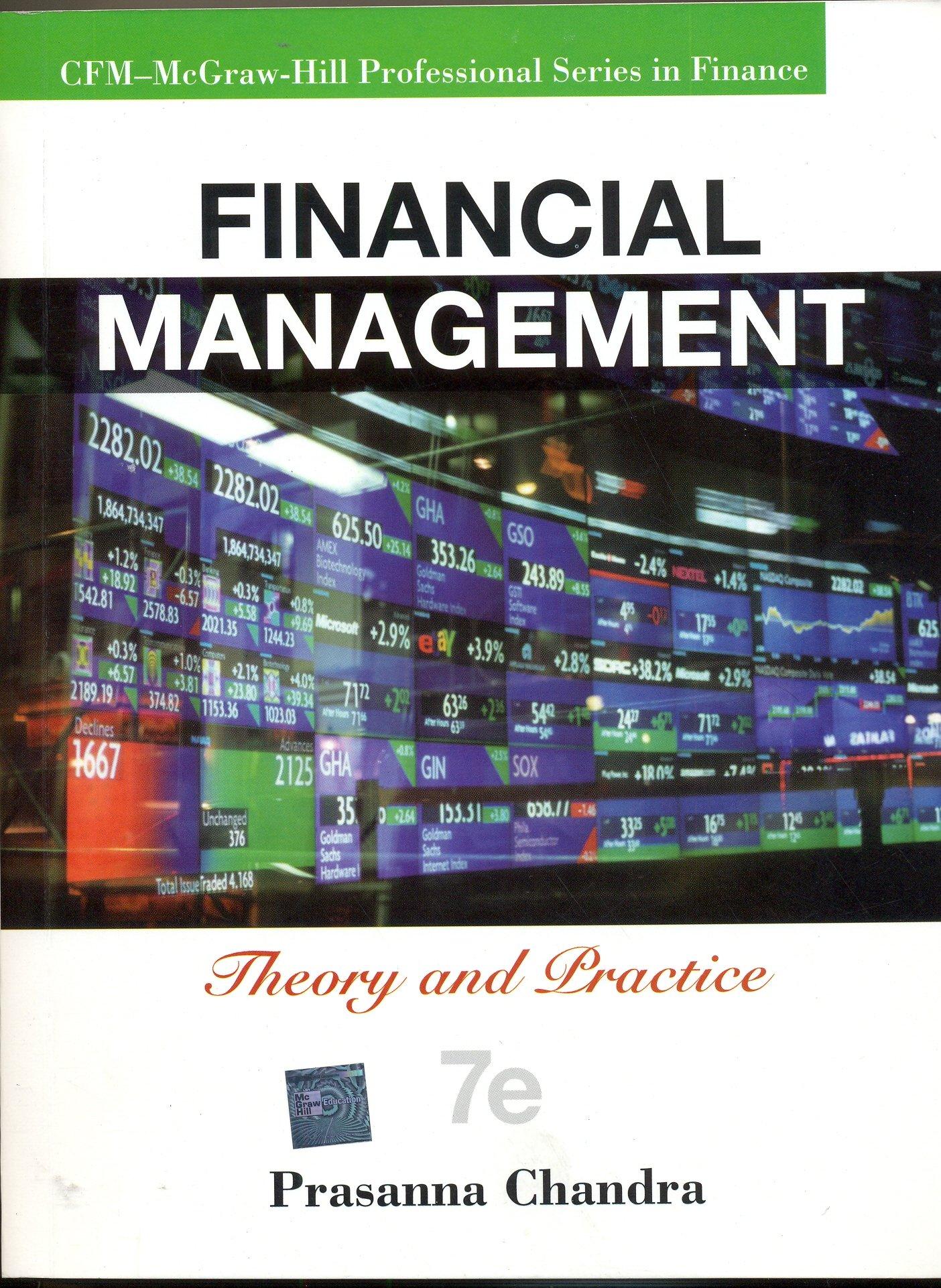
.1.1 Problem Scenario 1. Consider the decision problem of investing an amount of wealth W= 1000000 into a risky asset with return R=0.2 with probability p and R=0.1 with probability (1p) and into a risk-less asset with risk-free interest rate r=5%. You are a risk averse investor with a CRRA utility function U(WT)=1WT11, where =0.5, and WT is the amount of wealth at the end of the investment. (a) Find the optimal allocation in risky and risk-less assets as a function of the probability p and the initial amount of wealth W invested. How does it depend on p ? Comment on your result. (b) Compute the optimal allocation for a probability p=50% and for p=51%. What is the optimal allocation for p=1 ? Comment. (c) What is the lower bound of the probability p for investing a positive share into the risky asset? Answer with and without using the utility function, and comment. What is this lower bound of probability for a risk neutral investor? (d) Find the lower bound of the probability p for starting to borrow money at the risk-less interest rate and invest an amount larger than W in the risky asset. 2. Consider an asset with a risky rate of return over a time period T expressed by R=0.6 with probability p and R=0.2 with probability (1p). The investment of an amount of wealth W returns WT at the end of the period T, and investors have utility function U(WT)=ln(WT). (a) Why this asset and this utility imply a positive risk premium? (b) Find the Certainty Equivalent of the investment for such utility as a function of the probability p of the higher return value and the invested wealth W. How does it depend on p ? Comment on your results. (c) Compute Certainty Equivalent and Risk Premium for a probability p=50%. (d) What is the risk premium for p=0 and for p=1 ? Comment on your results. (e) How does the risk premium depend on the probability p ? Proof that the risk premium is a non-monotonic function of the probability p. .1.1 Problem Scenario 1. Consider the decision problem of investing an amount of wealth W= 1000000 into a risky asset with return R=0.2 with probability p and R=0.1 with probability (1p) and into a risk-less asset with risk-free interest rate r=5%. You are a risk averse investor with a CRRA utility function U(WT)=1WT11, where =0.5, and WT is the amount of wealth at the end of the investment. (a) Find the optimal allocation in risky and risk-less assets as a function of the probability p and the initial amount of wealth W invested. How does it depend on p ? Comment on your result. (b) Compute the optimal allocation for a probability p=50% and for p=51%. What is the optimal allocation for p=1 ? Comment. (c) What is the lower bound of the probability p for investing a positive share into the risky asset? Answer with and without using the utility function, and comment. What is this lower bound of probability for a risk neutral investor? (d) Find the lower bound of the probability p for starting to borrow money at the risk-less interest rate and invest an amount larger than W in the risky asset. 2. Consider an asset with a risky rate of return over a time period T expressed by R=0.6 with probability p and R=0.2 with probability (1p). The investment of an amount of wealth W returns WT at the end of the period T, and investors have utility function U(WT)=ln(WT). (a) Why this asset and this utility imply a positive risk premium? (b) Find the Certainty Equivalent of the investment for such utility as a function of the probability p of the higher return value and the invested wealth W. How does it depend on p ? Comment on your results. (c) Compute Certainty Equivalent and Risk Premium for a probability p=50%. (d) What is the risk premium for p=0 and for p=1 ? Comment on your results. (e) How does the risk premium depend on the probability p ? Proof that the risk premium is a non-monotonic function of the probability p







